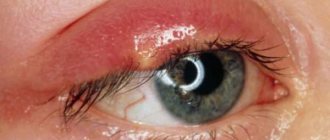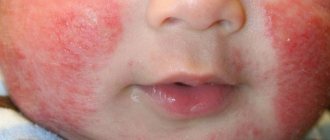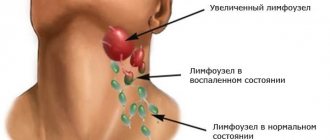Tuberculosis is an infectious process, the onset of which is provoked by various types of mycobacteria. When the disease is detected in the initial stage of development, the chances of successful treatment are much higher than when the pathology is diagnosed in the later stages. Lung tissue is most often affected, but other organs are also susceptible to the disease.
Mycobacterium tuberculosis is extremely resistant to various environmental factors and can remain in soil or water for a long time, which explains the widespread spread of the disease between people.
- The first signs and symptoms of pulmonary tuberculosis, photos
Symptoms of other forms of tuberculosis
Features of the development of pulmonary tuberculosis
It is noteworthy that the causative agent of the disease was discovered a long time ago, in 1882, by the famous scientist and researcher R. Koch, therefore even now the pathogenic bacillus that causes symptoms of pulmonary tuberculosis is often called Koch's bacillus. In the vast majority of cases, only a few types of these microorganisms belonging to the family of microbacteria are found in patients with tuberculosis.
The most remarkable ability of all types of tuberculosis is their high pathogenicity, allowing them to live and multiply quickly in any tissue of the human body. Among other things, the ability of microbacteria to form large colonies, but not cause any significant response from the host’s immune system, can be highlighted. There are many clinical forms of pulmonary tuberculosis, but the most common include:
- primary tubercomplex;
- miliary pulmonary tuberculosis;
- cavernous form;
- disseminated type of disease;
- tuberculoma;
- tuberculous pleurisy;
- focal tuberculosis;
- infiltrating form of tuberculosis;
- caseous pulmonary tuberculosis;
- cirrhotic form of pulmonary tuberculosis.
In the vast majority of cases, human infection occurs through airborne droplets or contact. In this case, the presence of a weakened immune system plays a predisposing role. It is noteworthy that it is almost impossible to become infected from a person with tuberculosis in public transport or another place, since in order for mycobacteria to infect the human body, long-term contact with a carrier of a large amount of the pathogen is required.
Under favorable conditions, Mycobacterium tuberculosis can maintain its vital activity in the environment for more than 6 months. Considering that tuberculosis can affect not only people, but also animals, in extremely rare cases, infection with mycobacteria can occur through food.
The most possible route of transmission of mycobacteria is the consumption of contaminated eggs and dairy products. Considering that meat can always be cooked, infection through it is not possible.
In most cases, it is difficult to identify where and when a person became infected with Mycobacterium tuberculosis.
The thing is that for a long time an infected person may not experience any symptomatic manifestations. Thus, the incubation period of the disease can be more than 10 years. The appearance of symptoms in people leading a relatively healthy lifestyle is in most cases associated with a significant decrease in immunity or stress.
Return to contents
How does infection occur and develop?
Tuberculosis is contagious and spreads by coughing, sneezing and contact with sputum. Therefore, infection of a child’s body occurs through close interaction with infected people. Outbreaks occur in places where large numbers of people are in constant close contact.
When infectious particles reach the alveoli in the lungs, another cell called a macrophage engulfs the TB bacteria.
The bacteria are then transferred to the lymphatic system and bloodstream, moving on to other organs.
The microbes then multiply in organs with high oxygen content, such as the upper lobes of the lungs, kidneys, bone marrow, and the soft membranes of the brain and spinal cord.
The incubation period ranges from 2 to 12 weeks. A child can remain contagious for a long period of time (as long as viable bacteria are present in the sputum) and may remain contagious for several weeks until appropriate treatment is given.
However, individuals have a good chance of being infected but manage the infection and show symptoms years later. Some never develop symptoms or become contagious.
Open and closed forms of pulmonary tuberculosis
Many people do not know the difference between open and closed forms of tuberculosis, although this is extremely important. The thing is that tuberculosis, like any other infectious disease, can be contagious or non-contagious under certain conditions. Most infectious diseases are not contagious only during the incubation period, but with tuberculosis things are a little different.
Throughout the entire period of the disease in a particular person, the disease can periodically flow into both contagious and non-contagious forms. The term open form of tuberculosis refers to the period of the disease when the patient begins to release large amounts of the causative agent into the environment.
The open form is diagnosed when mycobacteria are determined by examining a smear of the patient’s saliva. In the patient’s medical record, the presence of an open form is indicated by the designation “BC+”. Closed tuberculosis is characterized by the cessation of the process of release of the tuberculosis pathogen into the external environment, which is confirmed by examination of a saliva smear. In the patient's chart, the closed form of tuberculosis is marked with the designation “BC”.
Return to contents
Main classification of the disease
Pathology is divided into five classes:
- Exposure to Mycobacterium tuberculosis, absence of clinical signs of infection. First class individuals have a history of exposure but a negative reaction to the tuberculin skin test. If significant exposure has been observed within 3 months, a 10-week skin test should be performed, and in the intervening period, treatment for latent disease should be considered, especially for children under 15 years of age and persons with AIDS.
- Latent infection, absence of disease. Individuals in class 2 have a positive tuberculin skin test, negative bacteriological tests, and no clinical, bacteriological or radiological evidence of active tuberculosis. Some people in this group may benefit from treatment for latent TB infection.
- Tuberculosis is not clinically active. This class is defined by a history of a previous episode of pathology, persistent abnormal radiographic findings in an individual with a positive tuberculin skin test, negative bacteriological studies, and a lack of clinical and/or radiographic evidence of current disease.
- Suspected tuberculosis. Individuals should be classified in this class at the time of diagnosis, regardless of whether treatment has been initiated or not. People cannot stay in this class for more than 3 months. When diagnostic procedures are completed, the person should be assigned to one of the previous groups.
- Includes all patients with an active process for which diagnostic procedures have been completed. To qualify for the group, a person must have clinical, bacteriological and/or radiological evidence of current pathology. The patient remains in class 3 until treatment for the current episode of illness is completed.
Form of pathology:
- pulmonary;
- pleural;
- lymphatic;
- osteoarticular;
- genitourinary;
- widespread (miliary);
- meningeal;
- peritoneal;
- another.
Bacteriological status
- negative;
- not done.
Chest X-ray results
- normal;
- pathological.
Skin reaction to tuberculin:
- positive;
- negative.
www.atsjournals.org
Main symptoms of pulmonary tuberculosis
The disease manifests itself in most cases depending on the individual characteristics of the body. In addition, symptoms can vary significantly depending not only on the form of pulmonary tuberculosis, but also on the phase of the disease. There are 2 main phases of tuberculosis. The first phase is characterized by the appearance of a significant focus of infiltration and an increase in the number of mycobacteria in the patient’s body. At this time, the formation of new foci of inflammation in the lungs takes place, as well as the growth of old ones. The second phase of pulmonary tuberculosis is characterized by a process of stabilization, in which foci of inflammation are reduced in size, and scarred areas appear in their place.
Signs of pulmonary tuberculosis can be divided into those that are a consequence of intoxication of the body and those that appear against the background of damage to the lung tissue. Symptoms of general intoxication, most often observed with pulmonary tuberculosis, include:
- decreased performance;
- decreased appetite;
- rapid weight loss;
- general weakness;
- tachycardia;
- cases of long-lasting fever;
- depressive state.
Symptoms that characterize lung lesions are more pronounced in adults. As a rule, it is the pulmonary symptoms that force a person to seek medical help, and some of them are diagnostically valuable and allow one to suspect tuberculosis in the patient. Pulmonary symptoms of tuberculosis include:
- hacking cough that does not go away for more than 3 weeks;
- sputum streaked with blood;
- progressive shortness of breath;
- hemoptysis;
- pain indicating damage to the pleura.
It is noteworthy that there is no clear relationship between the stage of pulmonary tuberculosis and symptoms. When auscultating patients, the doctor may note harsh breathing and wheezing, as well as a local decrease in typical lung sounds.
Return to contents
Skin tuberculosis in the early stages
Forms of the disease:
- tuberculous lupus;
- scrofuloderma;
- warty tuberculosis;
- papulonecrotic tuberculosis.
Lupus affects the face. Dense tubercles of a yellowish tint appear on it, which turn into asymmetrical plaques with a smooth whitish scar in the middle. Scrofuloderma affects the neck, collarbones, and sternum. Nodules appear in these areas, the skin on which gradually turns red. The nodules are picked and pus is released from them. The resulting ulcers grow together into large areas. Warty tuberculosis affects the hands. Papulonecrotic appears on the face, buttocks, elbows and knees. They become covered with crusts, and when they fall off, scars appear.
Complications of pulmonary tuberculosis
In the absence of targeted treatment, most patients eventually develop symptoms of various life-threatening complications. The most common complications of advanced pulmonary tuberculosis are heavy bleeding. Typically, the amount of bleeding in the lungs can exceed 50 ml, which poses a serious threat to life.
Among other things, under certain conditions, pulmonary-heart failure can develop, which significantly shortens the patient’s life, since with this pathology there is a significant disruption of the functioning of the heart and lungs due to insufficient oxygen supply to the tissues and the appearance of extensive foci of necrosis.
Another common complication is pneumothorax. With the development of this pathological condition, there is a violation of the integrity of the pulmonary wall, which leads to the leakage of air into the abdominal cavity, which is why. In this case, the patient may develop respiratory failure in a short time.
Some patients develop a sign of amyloidosis, which significantly aggravates the general condition. It is worth noting that in most cases, severe complications of tuberculosis are observed only in people leading an asocial lifestyle.
Return to contents
What is tuberculosis and what is its danger to a child?
Tuberculosis in children is an infectious-inflammatory process in the internal organs and tissues of the body caused by the penetration of Mycobacterium tuberculosis. The infection spreads throughout the body, initially affecting the lungs and forming tuberculous tubercles in them.
Diagnosis and treatment of the disease largely depend on the age category of the patient. The disease is most critical for three ages - infants, infants under 3 years of age and adolescents.
This disease is difficult to identify; its symptoms are very similar to ordinary ARVI. Parents therefore turn to a specialist not at an early stage, but when the infection has already settled in the baby’s body. The only way to detect the disease in a timely manner is to regularly follow preventive measures.
If tuberculosis is detected in a timely manner, treatment of the baby will take no more than 2-3 months. Otherwise, the pathogenic process will last for months, moving from remission to an acute form.
https://youtube.com/watch?v=ew4Ju3Rk8tc
Doctors distinguish three main groups of forms of tuberculosis:
- unspecified localization,
- respiratory tract,
- extrapulmonary lesions.
Tuberculosis of unspecified localization most often affects young children or teenagers. This form is usually detected months and sometimes years after infection, so it often develops into chronic tuberculosis. The main ways to diagnose it are a blood test or PCR.
Respiratory tuberculosis occurs in the mildest form and does not entail dangerous consequences. The incubation period lasts from several weeks to a year until the first manifestations of the disease occur.
Extrapulmonary tuberculosis is a secondary disease that affects various internal organs of the child:
- Tuberculosis of the meninges is a disease that is extremely dangerous for the life of a child. In a child’s body, the disease is very severe and entails many unpleasant consequences - mental and mental retardation, paralysis, convulsions. Children under one year of age who have not been vaccinated with BCG are at main risk. The first symptoms are accompanied by elevated body temperature, intoxication of the body, headaches, and convulsions. With timely diagnosis and effective treatment, tuberculous meningitis resolves within a few months.
- Tuberculosis of bones and joints affects the spine, as well as the hip and knee joints. The disease occurs with clearly defined symptoms - disturbances in the child’s movements and gait, accompanied by pain.
- Tuberculosis of the kidneys is a fairly common form of the disease in adolescents. Due to the primary infection of the lungs, the infection penetrates through the blood into neighboring organs and most often affects the kidneys.
- Tuberculosis of peripheral lymph nodes mainly occurs in children with HIV. The main symptom of the disease is enlarged lymph nodes. The child develops subcutaneous balls filled with pus.
Treatment methods for pulmonary tuberculosis
If there is a suspicion that a patient has tuberculosis, a clinical blood test is first performed, since when it is deciphered, some markers indicating the disease may be noted. With tuberculosis, an increase in the number of band neutrophils, and sometimes eosinophils, is detected in the blood. In addition, a decrease in the level of lymphocyte concentration can be identified. Next, urine and sputum are analyzed, which help determine the extent of the process. X-rays and, in some cases, MRI and CT scans are required to confirm lung damage. The Mantoux test is performed if some of the data obtained from the analyzes are not indicative.
After identifying the characteristics of the course of pulmonary tuberculosis in an individual patient, adequate treatment can be prescribed, including taking primary and reserve drugs. It should be noted that with a closed form, the patient can be treated at home, while with an open form, observation in a hospital setting is preferable. In order to cure tuberculosis, it is very important to adhere to the medication regimen prescribed by your doctor. The main line drugs for the treatment of tuberculosis include the following drugs.
- Streptomycin.
- Ethambutol.
- Rifampicin.
- Isoniazid
- Pyrazinamide.
Reserve drugs are prescribed only if the patient has a drug-resistant form of tuberculosis. In addition, reserve drugs can be used if the patient has allergic reactions to first-line drugs.
If a positive Mantoux test is detected in people at risk of tuberculosis, but there are no obvious signs of the disease progressing, a treatment regimen with 1 or 2 main-line drugs may be prescribed, since the doctor may suspect in this case the presence of the initial form of the disease.
Pulmonary tuberculosis, which was treated according to all the rules, completely recedes, which allows a person to lead a full life. Prevention of tuberculosis involves a number of measures aimed at preventing morbidity and early detection of patients.
What can you do?
Of course, if you suspect (only 2-3 symptoms are enough) that your baby is sick, contact your pediatrician. Because it is necessary to determine the correct diagnosis as early as possible and prescribe adequate treatment.
And most importantly, refrain from self-treating your child with antibiotics! Because the tuberculosis bacillus develops resistance to many drugs. Therefore, it will be much more difficult to cope with the disease later, and the risk of complications will increase.
And the child will take longer to receive treatment, and the prescribed medications to combat the tuberculosis bacillus are far from harmless.











